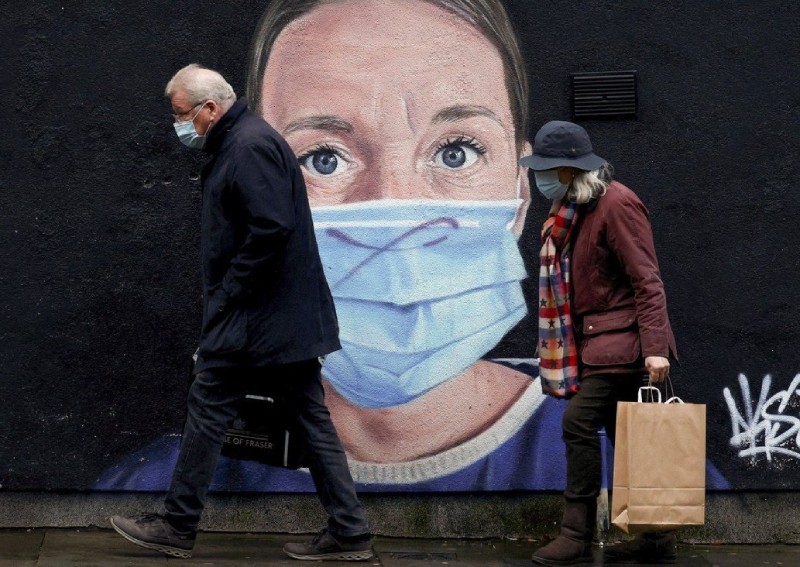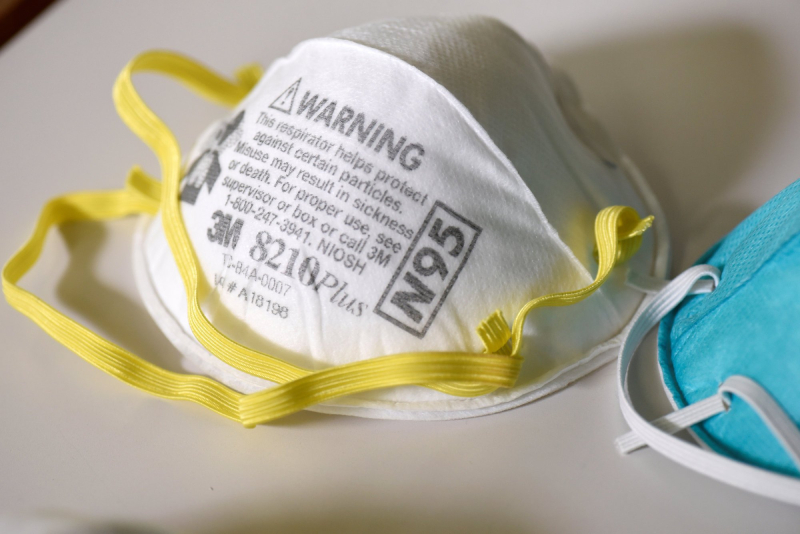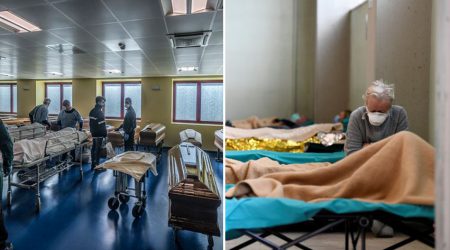Are N95 masks necessary against Omicron? Which face mask offers the best protection against Covid-19, and slows the infection to others?

As the highly transmissible Omicron variant is set to become the dominant Covid-19 variant globally, some experts have called for the public to wear well fitted face respirators such as N95 masks amid concerns that the commonly used cloth and surgical masks might not offer enough protection.
N95 masks are usually used by health care workers in high-risk environments or procedures. They are also more expensive, stuffy, and may be more difficult to get in some countries. Are they necessary? What do scientists say?
So how much more contagious is Omicron compared to earlier strains?
Scientists who urge the public to upgrade the masks they wear, or even consider using N95 masks and their equivalent, argue that the Omicron variant is a lot more transmissible than the Delta variant.
A study by the University of Hong Kong found that Omicron could replicate 70 times faster in human respiratory tissue than Delta, which may help the variant spread more rapidly between people.
A recent study by the University of California also suggests that Omicron virus particles floating in the air in aerosols may stay viable longer than Delta particles, meaning the risk of airborne transmission is higher.
One alarming example cited is an Omicron infection in a Hong Kong hotel. A person in a room across the hall from an infected guest in another room was infected with the Omicron variant even though he had no contact with the Covid-infected guest.

Linsey Marr, an aerosol scientist at Virginia Tech and a scientist who also studies infectious disease, warned about the spread of Covid-19 via aerosol even before the Omicron variant emerged.
“The virus is in droplets that range in size from smaller than we can see to large ones that fall to the floor quickly. There is no hard cut-off between ‘aerosols’ and ‘droplets’,’ she tweeted in March.
Marr tweeted to protest against being asked to replace her N95 mask with a surgical mask on a bus in Canada, starting a heated discussion about whether the public should wear face-fitting respirators such as N95 because they can filter small particles.
Who are the scientists calling for the use of N95 masks or similar face-fitting respirators?
One advocate is Tom Frieden, former director of the United States Centres for Disease Control and Prevention.
“Omicron is astonishingly infectious. Get vaccinated and boosted. To avoid infection, mask up in public indoor spaces — and consider upgrading to more protective N95 masks,” Frieden tweeted.
Professor David Fisman of the Dalla Lana School of Public Health at the University of Toronto told a Canadian television network that “baggy” masks with gaps around the sides would not do the job.
“We’ve known for over a year that Covid-19 spreads through aerosol …. And that’s really important because that means people get infected by breathing in these tiny particles,” he said.
Respirators “are really fitted to your face … and act to filter out any particles in the air that you breathe”, he said in the interview.
Marr said that even if the public could not get a respirator, they should at least try to make their mask fit better.
“Also, if you can’t easily get a respirator, grab a surgical mask that’s often freely available and improve fit by adding toggles (cord locks) to the ear loops, knotting & tucking, or bracing (e.g., @FixTheMask) to improve performance,” she tweeted.
What are the differences between a cloth mask, face barrier, medical mask and particulate filtering “facepieces”, such as N95 and KN95 masks?
A cloth mask or face barrier covers the wearer’s nose and mouth and its primary function is to prevent an infected person from spreading the disease.
But some experts, such as the scientific director of Ontario’s Science Table advisory, Peter Juni, say the high transmissibility of Omicron means it is time to abandon them.
“One thing which is really important to realise is if you have a single-layer cloth mask, ditch it, full stop,” Juni said, according to Canadian media reports.
There are different types of disposable face masks. Level 2 face masks have three layers and level 3 have four layers and they must meet standards that filter particles of different sizes.
While they offer much better protection than cloth or single-layer masks, they are loose-fitting and the edges of the masks are not designed to form a seal around the nose and mouth.
Frontline health care workers performing high-risk procedures are usually required to wear a particulate filtering facepiece. N95 respirators are the most common. N95 masks filter at least 95 per cent of airborne particles but are not resistant to oil-based particles.
There are similar requirements in Europe and China for particulate filtering respirators. In Europe, FFP2 respirators must filter at least 94 per cent of airborne particles, while China’s KN95 respirators are expected to meet at least 95 per cent filtration.
However, the US CDC warns that about 60 per cent of KN95 masks sold in the US are counterfeit.
It is also important for wearers to ensure masks fit their faces. These respirator masks may not be suitable for people with certain medical conditions, such as cardiac illnesses, and professional advice is required.
Some of these respirators have exhalation valves that makes breathing out easier, but they are described by some medical experts as “selfish masks” because that feature cannot stop the wearer from infecting others.
Is it necessary to upgrade our masks to N95? What do experts say?
According to World Health Organisation (WHO) guidelines, N95 or respirators of similar standards are only required when health workers are performing dangerous procedures and caring for Covid-19 patients. For the public, non-medical masks are enough and vulnerable people such as the elderly are advised to wear surgical masks.
Experts said there was a range of factors to consider when choosing the right mask.
“From current scientific evidence, it was observed that wearing a N95 mask offers at least five times and 10 times lower risk of Sars-CoV-2 infection as compared to surgical mask wearing, and not wearing [a] mask at all, respectively,” said Vincent Pang, of the Saw Swee Hock School of Public Health at the National University of Singapore.
“However, it is equally important to understand the effectiveness of wearing a N95 mask among public areas and indoor settings by taking into consideration one or more of these epidemiological factors.”
He said factors included a person’s health and age, the setting, whether Covid-19 was prevalent in a country and how severe and contagious the virus was.
“Based on a more conservative precaution that Omicron is likely to cause severe disease among vaccinated healthy individuals (since evidence remains limited), I would advise individuals to wear an N95 mask in indoor or crowded … settings if they have high likelihood of exposure and succumbing to the virus based on the factors above,” Pang said.
He said for those with a low likelihood of succumbing to the virus, wearing a surgical mask was likely to offer enough protection, “provided there is high level of compliance to keep the surgical mask properly secured at all times, together with good hand hygiene practices and social distancing”.
David Heymann, a professor of infectious disease epidemiology at the London School of Hygiene and Tropical Medicine, said it was important to shield the eyes and maintain a safe distance from others in addition to wearing a mask.
“Remember, the eyes being exposed can be a source of infection. So if you’re wearing a nose and mouth-covering mask, you’re not protected against infection, because if somebody sneezes or coughs on you, it’ll go right into the mucous membranes of your eyes, and you’ll be infected,” he said.
Surgical masks were intended to stop an infected person spreading the disease, Heymann said, advising that people should decide how they wanted to protect themselves as well.
“It also would depend on how long they wear the mask. If they wear a face, cloth mask and it gets wet from their respiration or from their saliva or whatever, then it will be easier for it to transmit the virus through. So it depends on lots of different conditions.
“But if people want to protect themselves, they should physically distance themselves from crowded places.”
Whether people could tolerate wearing N95 was also a factor, US top respiratory expert Anthony Fauci told CNBC.
“There’s no doubt that fabric masks work,” he said. “The N95 is the best one. But they are relatively uncomfortable to wear. Not a lot of people wear them. But a regular surgical mask, as well as a cloth mask, is fine.”












Leave a Reply